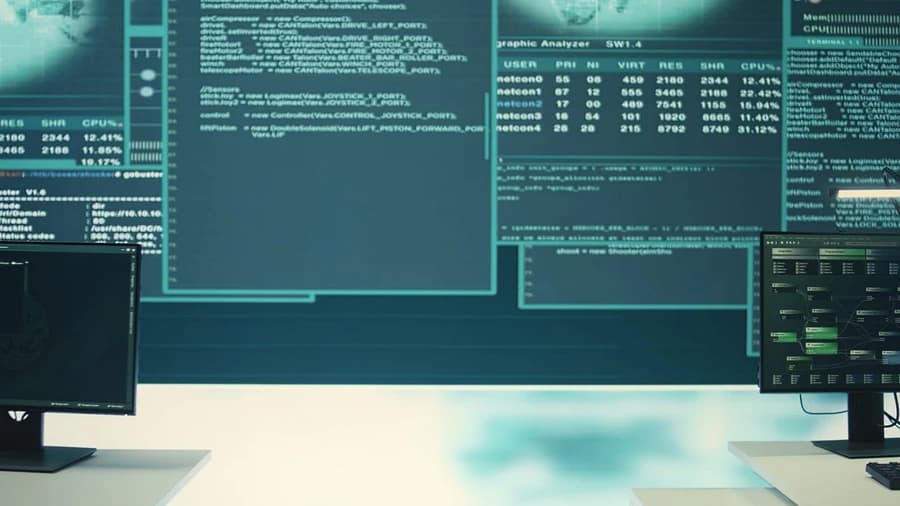Understanding the Power of Strategic Threat Intelligence for Cyber Risk Reduction
Cyber threats are becoming more sophisticated and targeted, requiring businesses to move beyond reactive security. Strategic threat intelligence provides a high-level view of emerging risks by analyzing attacker motives, geopolitical trends, and industry-specific threats. This proactive approach helps organizations prioritize resources, support compliance, and strengthen resilience against evolving cyberattacks.

Cyber threats have scaled and become more powerful, both in scope and sophistication. Organisations are now dealing with enemies that are not only bolstered by the ROI of an attack, in some cases over $3 million, but adversaries that have an ingrained fanaticism for wholesale destruction. Hackers that range from ideologically motivated hacktivists to state-sponsored threat Actors and villains with military-grade capabilities, with technology that far surpasses what most businesses have on hand and with the financial backing of some of the wealthiest nations and corporations in the world.
ENISA’s 2023 Threat Landscape report noted a 30% increase in long-term, targeted attacks against European infrastructure, energy firms, and supply chains. These operations are not opportunistic—they are calculated, persistent, and deeply strategic. As such, defending digital infrastructure demands more than reactive measures. Organisations must shift the mindset and go on the hunt- they have to create an anticipatory defence. A defense strategy that’s guided by professionals that looks way beyond immediate alerts. This is basically the role of strategic threat intelligence
What Is Strategic Threat Intelligence?
It is a high-level form of threat analysis that examines long-term trends, geopolitical context, and adversarial intent. Unlike technical threat data or IOCs (indicators of compromise), strategic cyber threat intelligence helps security leaders and executive teams to prepare for threats that may not yet be visible in system logs, but are actively forming in the geopolitical and digital landscape.

Instead of just reacting to breaches, strategic threat intelligence allows organisations to anticipate them. It helps shape risk-aware policies, guide cybersecurity investments, and align business objectives with emerging threat realities. In short, it moves cybersecurity planning from the basement to the boardroom.
Key Components of Strategic Threat Intelligence
Strategic cyber threat intelligence is broad in scope, focusing on the "why" and "what's next" of cyber threats. It helps guide long-term decisions. How? By building context around attacker motivations, systemic vulnerabilities, and emerging global patterns.
It takes into consideration not only what’s happening right now, but how the now affects you down the line. You might be wondering, I’m a small business, why would anyone target me? Well, there are multiple reasons.
The most common is that you are an easy target. That your lack of defense, in part due to your idea that you’re small, makes you a prime candidate for a breach. A hacker might not gain a huge windfall from attacking you, but they get a win, and they get a financial foothold over you.
Then there’s the fact that you might not be the prime target —you might just be a stepping stone to get to someone else. You might be a supplier or a vendor or someone who, for some reason, gives hackers access to a bigger target.
There are multiple reasons why you might be on someone’s watchlist, which is one of the key components of Strategic Threat Intelligence.
Threat Actor Motives and Tactics
Understanding an adversary’s goals provides clues as to how and why they will attack.. Nation-state actors may seek disruption, surveillance, or economic advantage. Criminal groups pursue financial gain through extortion, fraud, or access to valuable data.
Strategic intelligence focuses on:
Geopolitical motivations
Ideological campaigns (for example: hacktivism)
Industry-specific targeting (for example, attacks on energy, healthcare, or logistics)
This insight helps businesses understand why they might be targeted and what attack methods are likely.
Emerging Threat Trends
Strategic teams monitor shifts in global threat activity. These may include:
Adoption of new ransomware-as-a-service platforms
Increased use of AI for phishing campaigns
Expansion of the supply chain compromises in targeted sectors
Recognising patterns across regions or industries allows leaders to anticipate which threats could materialise next.
Risk-Based Intelligence
Not all threats are the same — the truth is that part of this game is the ability to label what might be a DEFCON 1 and what’s simply a small breach. Small attacks can be mitigated while they occur, think of them as a cold. Common and treated with nothing more than bed rest. Large-scale assaults, on the other hand, demanded other approaches. Strategic intelligence prioritises threats based on their likelihood and potential business impact. This helps avoid wasted resources and focuses on vulnerabilities most likely to be exploited.
Risk-based insights allow organisations to:
Prioritise infrastructure upgrades
Reassess vendor relationships
Address gaps in insurance or incident response planning
Data Sources for Strategic Intelligence
At the strategic level, threat intelligence information can be exchanged through a range of trusted sources. Effective intelligence includes input from:
OSINT (Open Source Intelligence) – News, blogs, and public advisories
Government Publications – Alerts from agencies like ENISA, Europol, and national CERTs
Threat Intelligence Vendors – Commercial feeds tailored to industry-specific needs
ISACs (Information Sharing and Analysis Centres) – Sector-specific threat reports shared among trusted stakeholders
Together, these sources build a panoramic view of evolving threats and their possible consequences.
How Strategic Threat Intelligence Contributes to Cyber Risk Reduction
Strategic intelligence shifts cybersecurity from a tactical necessity to a business-critical discipline. It offers context that elevates decision-making and shapes long-term resilience.
A More Proactive Security Posture
Rather than reacting to incidents as they happen, strategic threat intelligence helps organisations detect the conditions under which attacks are likely to occur. This includes pre-attack indicators such as:
Increased chatter on underground forums
Legislative tensions between states
Targeted campaigns across specific sectors
By detecting these early signs, businesses prepare defenses before systems are compromised.
Risk Management and Prioritisation
Strategic intelligence informs enterprise risk management. It aligns threat landscapes with business functions, allowing teams to prioritise resources where impact would be most severe.
This translates to:
Improved vulnerability management
Smarter budgeting for cybersecurity tools
Investment in training or third-party audits where risk is highest
Better Decision-Making Across Departments
Strategic cyber threat intelligence is not limited to security teams. It supports departments such as:
Finance, for aligning budgets with risk
Legal, for anticipating compliance risks
Communications, for preparing crisis response strategies
Procurement, for assessing vendor exposure
Cross-functional collaboration improves overall resilience and preparedness.
Supporting Regulatory Compliance
EU-based organisations must meet strict data protection laws, including GDPR, DORA, and NIS2. Regular reporting, breach response, and risk analysis are now legal requirements, not best practices.
Strategic threat intelligence helps businesses stay ahead of regulators by:
Documenting risk decisions
Aligning internal controls with external threat environments
Preparing evidence of due diligence
Strategic Threat Intelligence in Action
Theory is useful. Action is necessary. Effective strategic threat intelligence manifests in concrete operational outcomes that improve long-term security and business continuity.
Enhancing Incident Response Plans
Strategic analysis reveals likely adversaries, their preferred methods, and expected points of entry. This enables security teams to tailor incident response plans accordingly.
For example:
Anticipating data encryption attacks by ransomware gangs
Prioritising cloud incident simulations
Coordinating with law enforcement in high-risk jurisdictions
Brand and Reputation Protection
Threats increasingly involve the weaponization of reputation. Strategic intelligence flags risks such as:
Impersonation on social media
Credential leaks that lead to brand misuse
Targeted disinformation campaigns
Early detection allows communications teams to respond quickly and mitigate reputational harm.
Budget Planning and Trend Forecasting
Understanding long-term threat trends justifies cybersecurity investment. Instead of arguing for budgets based on hypotheticals, CISOs can use strategic threat intelligence to present data-backed forecasts tied to specific regional or sector-specific threats.
Use cases include:
Planning secure infrastructure upgrades
Scaling MDR (Managed Detection and Response) coverage
Deciding when to outsource vs. build internal capabilities
Sector-Specific Example: Strategic Intelligence in Critical Infrastructure
EU energy providers have faced coordinated cyberattacks designed to undermine supply and generate geopolitical leverage. One example is the 2022 attack on a German oil supplier linked to foreign APT activity.
Strategic intelligence teams identified the group months before the attack based on prior targeting in Eastern Europe. Because the firm had already integrated strategic insights into its risk planning, it had:
Segmentations in place across OT/IT networks
Pre-approved communications with national CERTs
Alternative logistics mapped out
Damage was limited, response was swift, and recovery time was significantly reduced.
Why Organisations Must Integrate Strategic Threat Intelligence
Cybersecurity no longer resides exclusively in IT departments. The stakes are now enterprise-wide. Data theft, system downtime, and regulatory fines are only one layer. Supply chain disruption, reputational damage, and geopolitical fallout have become central concerns.
Strategic threat intelligence addresses this complexity by aligning security decisions with long-term business needs.
Key Benefits at a Glance
Helps anticipate and reduce long-term cyber risk
Prioritises resource allocation and budget planning
Improves executive decision-making with contextual threat insight
Strengthens compliance with EU digital regulations
Protects reputation and brand equity in digital spaces

Turning Intelligence into Strategic Advantage
Modern cyber threats are not isolated events. They are systemic, iterative, and deeply tied to global developments. Defending against them requires more than patching firewalls or chasing IOCs.
Integrating strategic threat intelligence allows organisations to think beyond the next breach. It offers clarity amid uncertainty and helps leaders act with foresight rather than fear.
To answer the question, "What is strategic threat intelligence?"—it is a forward-looking discipline, necessary for building resilience in an unstable digital era.